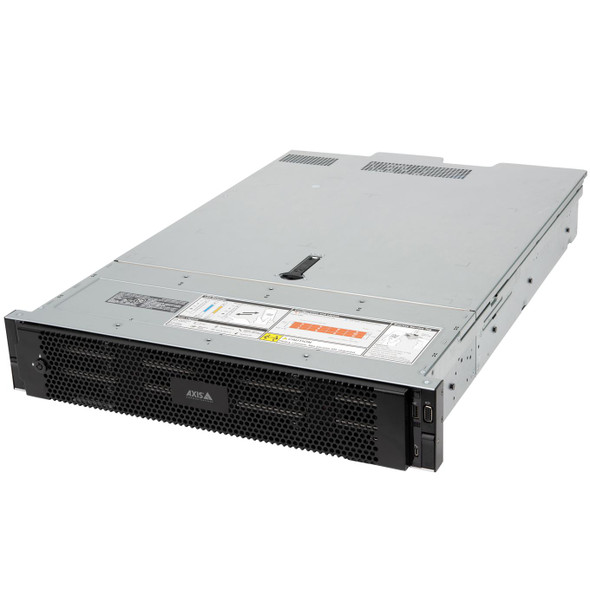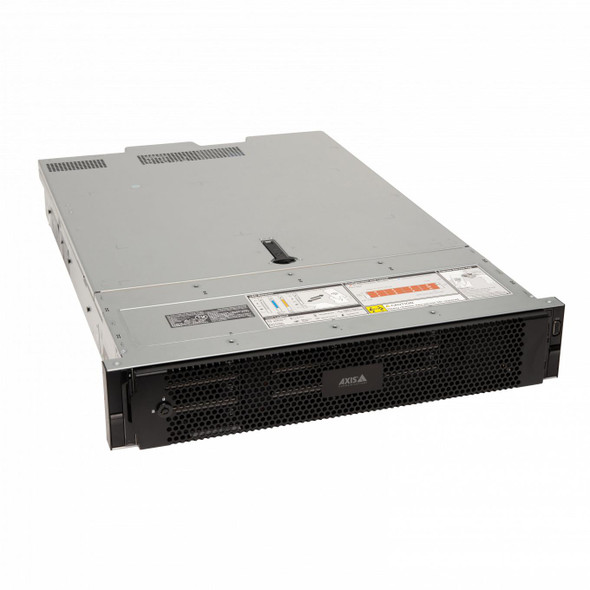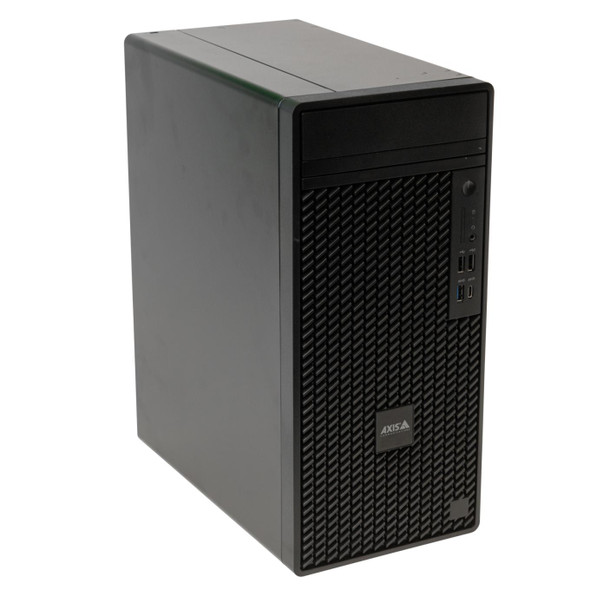Axis Video Servers
Axis Video Servers refer to a range of products developed by Axis Communications, a Swedish manufacturer of network cameras for various applications, including surveillance and security. Axis Communications is known for its expertise in the field of network video and has a wide range of products, including cameras, video encoders, and video management software.
Video servers, also known as video encoders, are devices that convert analog video signals into digital format for transmission over IP networks. This allows users to integrate analog CCTV cameras into a network video system, enabling features such as remote monitoring, storage, and analytics.
Key features of Axis Video Servers
- Video Encoding: Axis Video Servers typically support various video compression formats (such as H.264 and H.265) to efficiently encode and transmit video over IP networks.
- Integration with Analog Cameras: These devices allow the integration of existing analog cameras into a network video system, preserving the investment in legacy surveillance equipment.
- Network Connectivity: Axis Video Servers are designed to connect to IP networks, enabling remote access to video streams and facilitating integration with other network-based systems.
- Power over Ethernet (PoE) Support: Some Axis Video Servers may support Power over Ethernet, allowing them to be powered and connected to the network through a single Ethernet cable.
- Video Management Software (VMS) Integration: Axis video servers can be used in conjunction with Axis' own video management software or third-party VMS solutions for comprehensive video surveillance.
- Analytics Support: Advanced models may support video analytics, allowing for features such as motion detection, object tracking, and other intelligent video analysis.
- Secure Communication: Axis places a strong emphasis on security, and their products often come with features such as encryption, secure boot, and other measures to ensure the protection of video data.
What does Axis Video Servers do?
Axis Video Servers, also known as video encoders, play a crucial role in the field of video surveillance and security. Their primary function is to convert analog video signals from traditional CCTV cameras into digital format, allowing these cameras to be integrated into modern IP-based network video systems. Here's a breakdown of what Axis Video Servers do:
- Analog to Digital Conversion: Axis Video Servers take the analog video signals generated by analog surveillance cameras and convert them into digital format. This digital conversion is essential for compatibility with modern IP networks.
- Integration of Analog Cameras: Many organizations have existing analog surveillance systems with cameras that are still functional. Instead of replacing these cameras with newer IP cameras, Axis Video Servers enable the integration of analog cameras into IP-based networks. This integration helps in preserving the investment made in the analog camera infrastructure.
- Network Connectivity: Once the video signals are digitized, Axis Video Servers facilitate the transmission of these digital video streams over IP networks. This network connectivity enables remote monitoring and management of the surveillance system.
- Remote Access: Axis Video Servers allow users to access live and recorded video remotely. This is particularly useful for security personnel, managers, or system administrators who need to monitor and manage the surveillance system from different locations.
- Video Compression: Video servers typically support various video compression standards such as H.264 or H.265. These compression algorithms ensure that the video data can be efficiently transmitted over the network without consuming excessive bandwidth.
- Power over Ethernet (PoE) Support: Some Axis Video Servers support Power over Ethernet, which means they can be powered through the same Ethernet cable used for data transmission. This simplifies installation and reduces the need for separate power cables.
- Integration with Video Management Software (VMS): Axis Video Servers can be integrated with Video Management Software, allowing users to manage and control multiple cameras, configure settings, and conduct video analysis.
- Security Features: Axis places a strong emphasis on the security of their products. Video Servers often come with features such as encryption, secure boot, and user authentication to protect the integrity and confidentiality of the video data.
By performing these functions, Axis Video Servers contribute to the modernization and optimization of video surveillance systems, offering flexibility, scalability, and enhanced features compared to traditional analog systems.
Who should buy Geovision Bullet Cameras?
Geovision Bullet Cameras are suitable for a variety of users and applications, primarily those in need of video surveillance and security monitoring. Here are some scenarios and types of users who might consider purchasing Geovision Bullet Cameras:
- Business Owners: Business owners can use Geovision Bullet Cameras to monitor their premises, both indoors and outdoors. This includes retail stores, offices, warehouses, and manufacturing facilities.
- Homeowners: Homeowners interested in enhancing their home security may opt for Geovision Bullet Cameras for outdoor surveillance. These cameras can help monitor entry points, driveways, and other areas around the home.
- Security Professionals: Security professionals, such as those responsible for designing and implementing surveillance systems for businesses or public spaces, may choose Geovision cameras for their reliability and features.
- Government and Public Institutions: Government agencies, schools, hospitals, and other public institutions often require robust security systems. Geovision Bullet Cameras can be used to monitor public areas, entrances, and other critical points.
- Retailers: Retail businesses can use these cameras to prevent theft, monitor customer behavior, and ensure the safety of both customers and employees.
- Construction Sites: Geovision Bullet Cameras are often designed to withstand outdoor conditions, making them suitable for monitoring construction sites where weather resistance is essential.
- Transportation Hubs: Airports, train stations, and bus terminals can benefit from Geovision Bullet Cameras to enhance security and monitor crowd movement.
- Critical Infrastructure Protection: Industries such as energy, utilities, and telecommunications may use these cameras to monitor critical infrastructure sites for security and safety purposes.
- Residential Communities: Homeowners associations or gated communities might use Geovision Bullet Cameras for monitoring common areas, entrances, and ensuring the overall safety of the community.
- Remote Monitoring Applications: Businesses or individuals who need the ability to remotely monitor their properties or assets can benefit from Geovision cameras, which often support remote viewing via computer software or mobile apps.
Who should buy Axis Video Servers?
Axis Video Servers are ideal for:
- Businesses with Existing Analog Surveillance: Organizations with established analog surveillance systems can seamlessly transition to IP-based solutions without replacing their functional analog cameras, preserving their initial investment.
- Scalability Requirements: Users seeking scalable surveillance solutions can benefit from Axis Video Servers, allowing them to expand their system gradually by integrating analog cameras into a modern IP network.
- Remote Monitoring Needs: Businesses requiring remote access to live and recorded video feeds benefit from Axis Video Servers, enabling real-time surveillance and management from any location.
- Security-Conscious Users: Axis emphasizes security features, making Video Servers suitable for users prioritizing the protection of video data through encryption, secure boot, and authentication measures.
- Integration with Video Management Systems: Users looking for seamless integration with Video Management Software can leverage Axis Video Servers for comprehensive surveillance management and analytics.
What are the benefits of Axis Video Servers?
Benefits of Axis Video Servers:
- Cost-Efficient Migration: Preserve existing analog camera investments by converting them into IP-ready devices, avoiding the need for a complete camera replacement.
- Scalability: Easily expand surveillance systems by integrating analog cameras into IP networks, providing a scalable solution for growing security needs.
- Remote Accessibility: Enable real-time monitoring and management from any location, enhancing situational awareness and facilitating timely responses to security events.
- Compatibility: Achieve interoperability with various analog cameras, ensuring flexibility in choosing and utilizing surveillance equipment.
- Enhanced Features: Leverage modern IP features such as video analytics, motion detection, and remote configuration, enhancing overall system capabilities.
- Network Efficiency: Utilize efficient video compression standards (e.g., H.264, H.265) for optimal bandwidth usage and seamless transmission over IP networks.
- Power over Ethernet (PoE) Support: Streamline installation by providing power and data connectivity through a single Ethernet cable, reducing cable clutter and installation complexity.
- Security Measures: Benefit from Axis's commitment to security, with features like encryption and secure boot ensuring the protection of video data against unauthorized access and tampering.
Axis Video Servers offer a cost-effective, scalable, and feature-rich solution for organizations looking to modernize their surveillance infrastructure.
-

AXIS Camera Station S1296 Rack Mount Recording Server, Windows 10 OS, 96TB HDD - 02542-001
Brand: AXIS
Part Number: 02542-001$21,599.00$20,885.20- Pre-Installed Storage : 96 TB
- Video Output : 2x VGA
- Hard Drive Ports : 12 SATA Ports
- Max. Storage Capacity : 192 TB Storage Capacity
- Environmental : Indoor
$21,599.00$20,885.20 -

AXIS Camera Station S1296 Rack Mount Recording Server, Windows 10 OS, 192TB HDD - 02543-001
Brand: AXIS
Part Number: 02543-001$28,899.00$27,956.31- Pre-Installed Storage : 192 TB
- Video Output : 2x VGA
- Hard Drive Ports : 12 SATA Ports
- Max. Storage Capacity : 192 TB Storage Capacity
- Environmental : Indoor
$28,899.00$27,956.31 -

AXIS S1264 Camera Station Rack-Mount Recording Server with 64 Camera Station Licenses, 64 TB Storage - 02540-001
Brand: AXIS
Part Number: 02540-001$14,999.00$14,539.76- Pre-Installed Storage : 64 TB
- Video Output : 2x VGA
- Hard Drive Ports : 12 SATA Ports
- Environmental : Indoor
$14,999.00$14,539.76 -

AXIS S1232 Camera Station Tower Recording Server with 32 Camera Station Licenses, 32 TB Storage - 02536-004
Brand: AXIS
Part Number: 02536-004$8,899.00$8,614.66- Pre-Installed Storage : 32 TB
- Video Output : 1x VGA 3x Mini DisplayPort
- Hard Drive Ports : 8 SATA Ports
- Max. Storage Capacity : 64 GB Storage Capacity
- Color : Black
- Environmental : Indoor
$8,899.00$8,614.66 -

AXIS S1232 Rack 16 TB Recording Server - 02537-001
Brand: AXIS
Part Number: 02537-001$7,299.00$7,066.75- Pre-Installed Storage : 16 TB
- Video Output : 1x VGA
- Max. Recording Resolution : 8MP (4K)
- Hard Drive Ports : 4 SATA Ports
$7,299.00$7,066.75 -

AXIS S1264 Camera Station Rack-Mount Recording Server with 64 Camera Station Licenses, 24 TB Storage - 02539-001
Brand: AXIS
Part Number: 02539-001$11,799.00$11,399.14- Pre-Installed Storage : 24 TB
- Video Output : 2x VGA
- Hard Drive Ports : 12 SATA Ports
- Environmental : Indoor
$11,799.00$11,399.14 -

AXIS S1264 Camera Station Rack-Mount Recording Server with 64 Camera Station Licenses, 144 TB Storage - 02541-001
Brand: AXIS
Part Number: 02541-001$20,999.00$20,293.09- Pre-Installed Storage : 144 TB
- Video Output : 2x VGA
- Hard Drive Ports : 12 SATA Ports
- Environmental : Indoor
$20,999.00$20,293.09 -

AXIS S1228 Rack AI Video Server & NVR with 12TB HDD Included, Linux OS – 03334-001
Brand: AXIS
Part Number: 03334-001$10,999.00$10,510.27- Pre-Installed Storage : 12 TB
- Hard Drive Ports : 2 SATA Ports
- Environmental : Indoor
$10,999.00$10,510.27 -

AXIS S1232 Camera Station Rack-Mount Recording Server with 32 Camera Station Licenses, 32 TB Storage - 02538-001
Brand: AXIS
Part Number: 02538-001$8,599.00$8,337.00- Pre-Installed Storage : 32 TB
- Video Output : 1x VGA
- Hard Drive Ports : 8 SATA Ports
- Max. Storage Capacity : 64 GB Storage Capacity
- Color : Black
- Environmental : Indoor
$8,599.00$8,337.00 -

AXIS Camera Station S1216 16 Channel Tower Recording Server, 8TB HDD - 02694-004
Brand: AXIS
Part Number: 02694-004$3,799.00$3,685.59- Pre-Installed Storage : 8 TB
- Video Output : 3x DisplayPort 1.4
- Hard Drive Ports : 2 SATA Ports
- Color : Black
- Environmental : Indoor
$3,799.00$3,685.59
